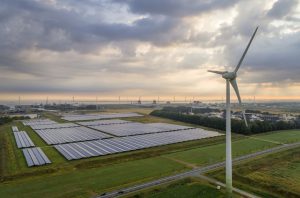(AF) Billionaire Mukesh Ambani’s plan to transform the flagship energy business of Reliance Industries Limited (RIL) to a global decarbonisation solutions provider may be a $60 billion opportunity for the company by 2025, Morgan Stanley says.
It also signals that change is the new constant in the global energy business and experts say that RIL is “acting really smart in terms of embracing the change by diversifying into newer spaces like green hydrogen, as well as manufacturing of cleaner technology,” it said in a report on Tuesday.
“RIL is a futuristic company and is betting its money on technologies which will become the mainstay of future energy. It is not betting big sums in renewable energy generation, a market that is already overcrowded with so many players,” added Vibhuti Garg, energy economist at the US-based Institute for Energy Economics and Financial Analysis, said.
RIL is committing big money on silicon and green hydrogen, Garg said, because there is a huge potential as countries and corporates move to announce big clean-energy goals.
“The company is diversifying and adapting to the changing world, which is a pathway led by clean energy transition,” she said.
In June Ambani announced a strategy to provide supporting infrastructure in areas of hydrogen, integrated solar PV and grid batteries – all areas with high entry barriers, but ones that promise huge technological advances and good returns.
For instance, RIL’s plan, which includes setting up of four gigafactories to make an entire spectrum of renewable and distributed energy solutions based on India’s quartz and silicon resources, will requires a huge $12 billion in investment, Ambani has said.
But silicon and hydrogen are expected to emerge as the “new oil” of the 2020s for Reliance, with potential of up to $60 billion in value creation if things fall into place by 2025, Morgan Stanley said.
“New energy EBIDTA potential is as big as the contribution from Reliance’s petrochemicals business now, but we think it will command a multiple twice as large,” the US investment bank said.
Unique Approach But Risky
Reliance’s approach takes a leaf from European oil majors to become an enabler of electrons, with less focus on producing them, and like US majors, it will focus on synergistic decarbonisation areas (with existing operations), such as carbon capture, hydrogen and even biofuels, the report said.
But the report also added that investments in these sectors are not without risk in terms of execution and technology changes, with cost competitiveness compared to China being the biggest challenge.
“Adoption of untested technologies like liquid metal and quickly falling hydrogen electrolyser prices are other challenges,” Morgan Stanley said.
However, the report added that considering the large domestic market and global focus on diversifying the sourcing of solar panels and batteries, the hurdle for Reliance to take market share is not as high.
“Still, it is encouraging to see big corporates like RIL is making commitments in these newer clean energy technologies,” Garg said.
“RIL efforts after all will trigger the much-needed investments into clean energy space and accelerate adoption of clean energy technologies not only in the power sector but also in other industries,” she said.
By Indrajit Basu.
























